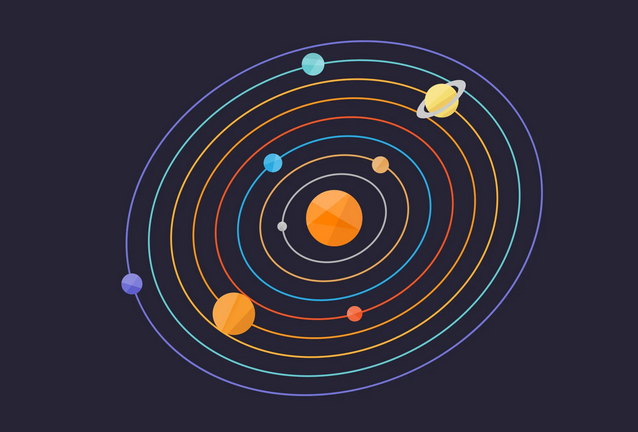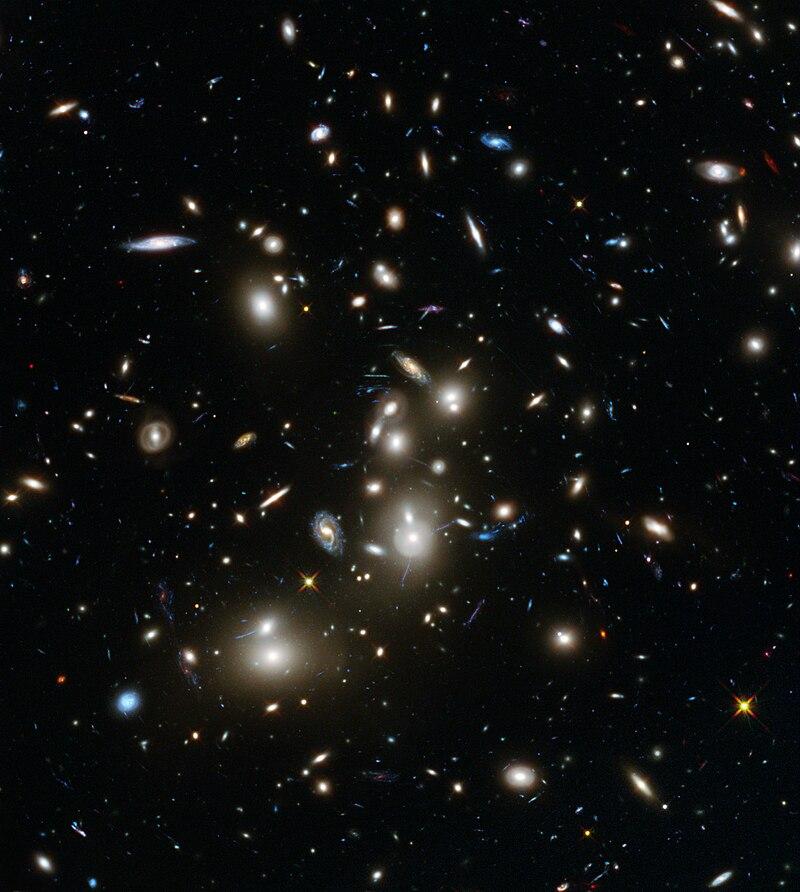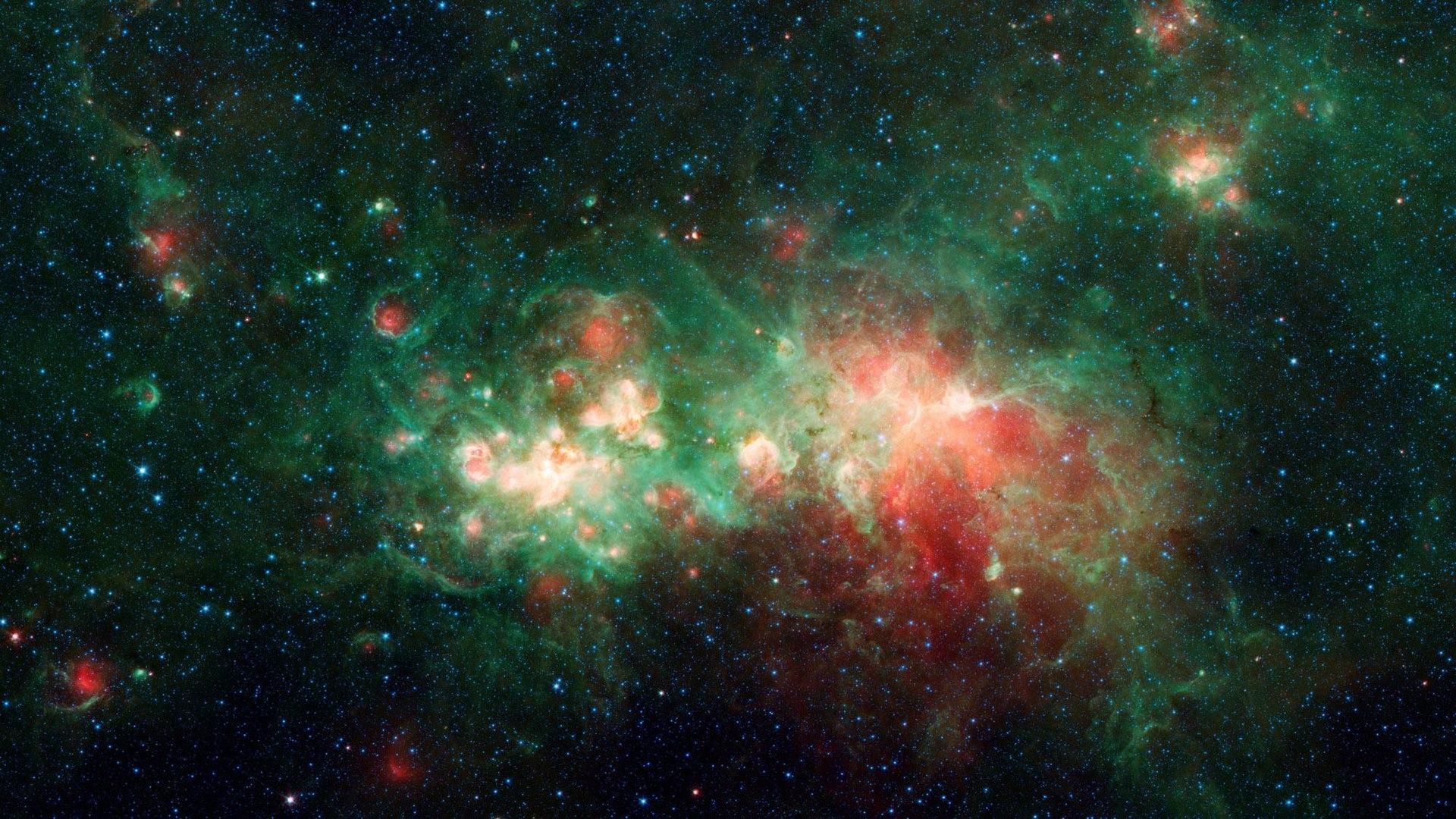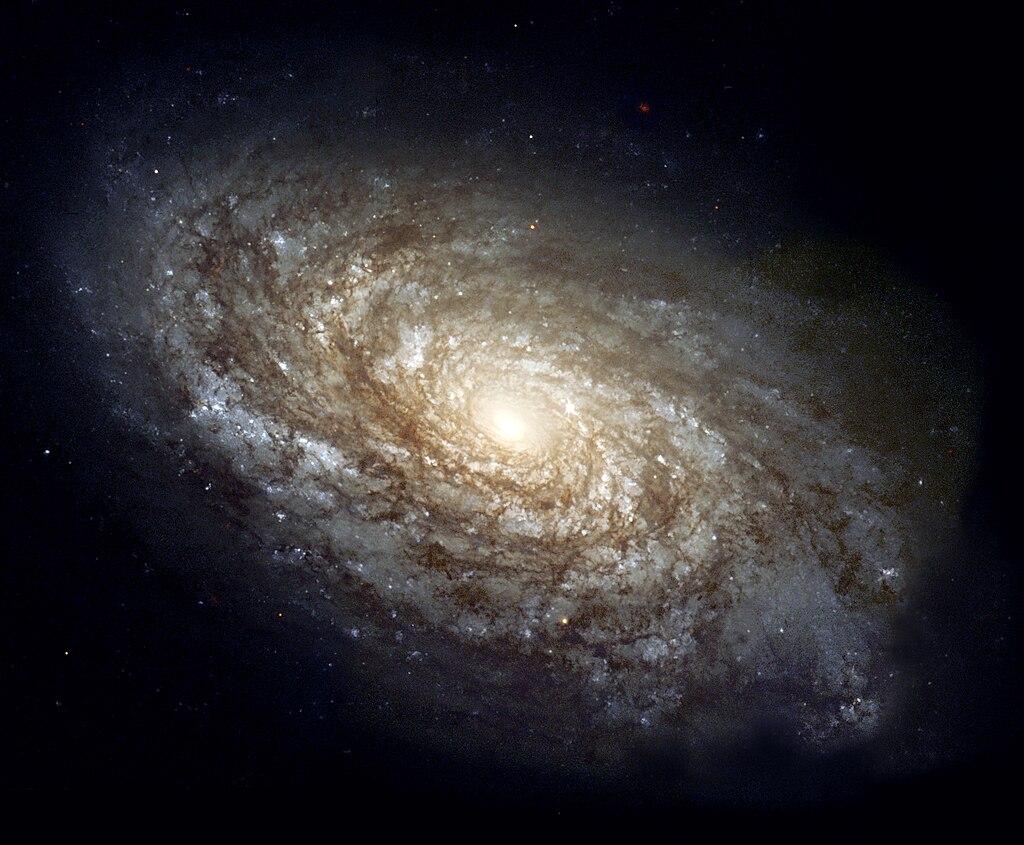We know that many bodies in space orbit other objects and we know why they do so, but do entire galaxies move in space around something? We are going to learn more about how galaxies form and how they move within our universe so read on to find out if a galaxy can orbit.
What Does Orbit Mean?
You probably already understand the concept of orbit but it never hurts to clarify things even the basics. Essentially then, an orbit is a concept in celestial mechanics that describes an object that takes a curved trajectory around another object and does so in a regular pattern.

It describes how the planets of our solar system move around the Sun and also how the moons of these planets move around them. We also have artificial satellites both around Earth and some other planets which we ourselves placed into orbit.
Orbit is created around planets in two main ways which are:
- A gravitational pull stopping an object escaping as it tries to fly off into space
- An object having sufficient tangential velocity for it to arrest its fall towards an object and remain in a curved trajectory around it.
How the Universe Was Created
In order to answer the question of whether galaxies orbit anything we need to take a closer look at how our universe most probably formed. It is thought that the theoretical Big Bang event, a concept that exists in physics, may have created the universe. It describes a possible version of our universe expanding from an initial state of high density and extreme temperature. Mathematicians and astronomers have combined their work for decades to try and prove or disprove this theory based on our observable universe.

Expanding Outwards
Key to the idea of the Big Bang is an understanding that the universe is gradually expanding. In 1912 observations by Vesto M. Slipher indicated redshifting of the light from remote galaxies. This led to the theory that the galaxies may be receding from the earth or basically moving further away.
A decade later using Einstein’s field equations Alexander Friedmann was able to provide theoretical evidence that the universe was indeed expanding.
The Big Bang Process
It Starts with Cosmic Inflation
The theory suggests that at one point all the matter in the universe was held together in an area of infinite density and temperature. This was prior to the Big Bang which in truth was more of an inflation outwards. Around 13.8 billion years ago it is thought that the universe began to expand outward from this dense mass.
The universe is thought to have expanded faster than the speed of light for a fraction of a second. This is a theoretical period known as cosmic inflation. Scientists aren’t sure what initiated this inflation or what may have powered it.
Cosmologists believe that inflation may explain a number of observable aspects of the universe as it is today. These include its flatness or lack of curvature.
Next the Big Bang and Nucleosynthesis
When this cosmic inflation stopped the energy that was driving it is thought to have transferred to matter and light. This new abundance of matter and light is what is described as the Big Bang. In the second following the Big Bang it is theorized that the universe consisted of an extremely hot primordial soup of light and particles. This hot soup is estimated to have been 18 billion degrees Fahrenheit or 10 billion degrees Celsius.
Within minutes, an era known as nucleosynthesis began which saw protons and neutrons colliding to produce the earliest elements. These would include:
- hydrogen
- helium
- lithium
- beryllium
After the first 5 minutes it is thought that most of today’s natural helium had been formed. The initial expansion and cooling of the universe had also reached a point to where no further element formation took place.
The universe however was still too hot for the atomic nuclei of these elements to capture electrons which would be necessary for them to form complete atoms.
Recombination
It would take 380,000 years for the universe to cool enough for atomic nuclei to capture electrons. This is a period referred to by astronomers as the epoch of recombination. There would be two major effects of this, the cosmic fog of free electrons was cleared allowing the universe to become transparent. This would also allow light to travel freely over great distances.

The second effect was that the formation of these first atoms produced light energy. We can still detect the glow of the formation of these first atoms to this day. This glow is known as the cosmic microwave background.
The Universal Dark Ages
In human history we refer to dark ages as periods in which a nation sees no new advances. It is a period of little advancement in knowledge and perhaps even decline. Cosmically speaking the universe would enter a dark age after the cosmic microwave background was formed.
The hydrogen atoms would absorb the shorter wavelengths of the existing light and as yet stars had not started to form. Over the next 200 million years our universe remained dark. It was simply a sea of hydrogen, helium and other trace elements in atomic form.
The First Stars
The gases of our universe were not spread out evenly and there would be so called clumps that had denser clouds of gas. As the clumps grew they would become denser and more compact. At the center of these dense clumps temperatures became hotter eventually leading to nuclear fusion.
This nuclear fusion essentially lit the stars which would have been roughly 30 – 300 times the size of our own star the sun. It would take several million years but eventually these new stars would collect together into galaxies.
Finally the Reionization Period
In the early lives of stars their light still could not travel far, relatively speaking, due to it being scattered by the dense gas clouds that surrounded them. However over time the ultraviolet light emitted by the stars would break down these clouds.
The UV light did this through ionization of the gas atoms breaking them into their constituent electrons and protons. With the progression this reionization allowed unobstructed starlight to travel further. Within the first billion years the light given off by stars had transformed nearly all of the gas making the universe transparent and as we see it today.
What Is a Galaxy?
It is important to clarify before we answer the question regarding a galaxy’s shape, what exactly a galaxy is. Basically it is a system of stars, stellar remnants, gasses, dust and dark matter. It is bound together by gravity.

It is estimated that there may be over 200 billion galaxies in the observable universe and range on average between 3,000 – 30,000 light years in diameter. Our galaxy, the Milky Way, is roughly 87,400 light years in diameter meaning at light speed it would take us over 87,000 years to cross from one side of the galaxy to the other.
Do Galaxies Orbit Anything?
This is an interesting question because the answer does not apply to all galaxies. If we were to ask if our own galaxy the Milky Way orbits anything the answer would be that other than its own center of gravity it does not orbit anything else.
At the center of the Milky Way is a super massive black hole, a very dense former star. Now it is thought that we do not so much orbit this black hole, known as Sagittarius A, but rather that our galaxy’s center of gravity just so happens to be there.
Interestingly though, even though the Milky Way does not orbit anything other than its own center of gravity several smaller galaxies orbit it. Although these smaller galaxies do orbit the Milky Way they are actually orbiting our galaxy’s center of mass.
One of these satellite galaxies is a Magellanic Cloud that is roughly 163,000 light years away. It is thought to be 1/100th the size of the Milky Way and does not have the clean spiral shape of our own galaxy. This is thought to be caused by other galaxies pulling and warping it out of shape.
Final Thoughts
There are countless galaxies out in our universe and they can be extremely varied. With an ever expanding universe these galaxies are moving and swirling and some of them are small enough to actually be orbiting other large galaxies. Those large galaxies however only orbit their own centers of mass or gravity which frequently tends to coincide with the presence of a massive black hole.
